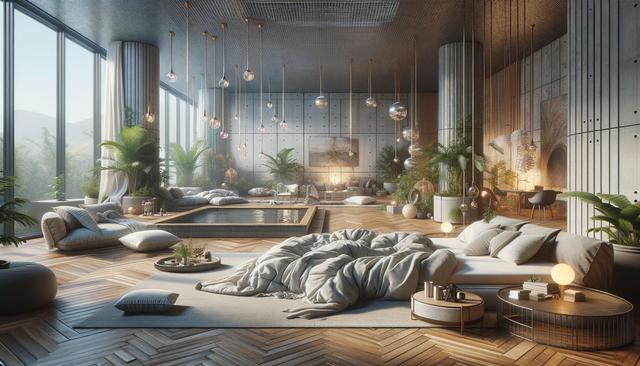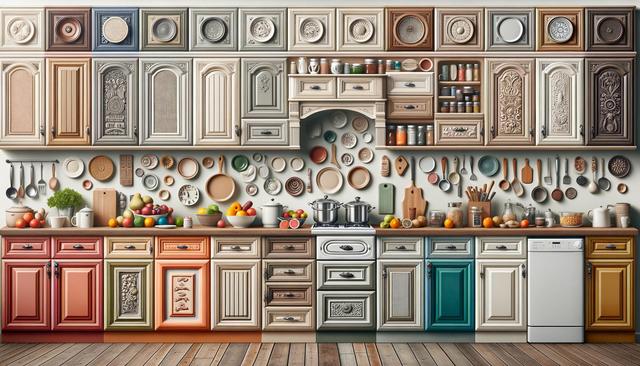Organic Materials and Nature-Inspired Elements
One of the most prominent interior design trends for 2025 is the continued focus on organic materials and nature-inspired aesthetics. Designers are embracing the beauty of imperfection and rawness, with a preference for materials that tell a story through texture and origin. Expect to see an increased use of natural stone, reclaimed wood, clay finishes, and woven fibers. These materials not only contribute to a grounding atmosphere but also align with eco-conscious values that are becoming increasingly important in design decisions.
Incorporating nature doesn’t stop at materials. Biophilic design is influencing layouts, color palettes, and even furniture choices. Interior spaces are being designed to mimic natural environments, with features like indoor gardens, water elements, and ample natural light. Additionally, earthy tones such as terracotta, forest green, and sand beige are making their way into living rooms and bedrooms, replacing the stark whites and greys of previous years. This shift reflects a growing desire to foster well-being and calm through environmental harmony.
Multifunctional and Adaptive Spaces
The way we use our living spaces continues to evolve, especially in response to changing lifestyles and remote work culture. In 2025, multifunctional design is not just a trend—it’s a necessity. Interior designers are crafting rooms that can shift roles seamlessly, supporting everything from working and studying to entertaining and relaxing. This is achieved through clever layout planning and the use of adaptive furniture that serves multiple purposes.
Key features of this trend include:
- Modular sofas and seating arrangements that can be reconfigured
- Fold-away desks and wall-mounted workstations
- Sliding partitions to divide or open up spaces as needed
- Storage solutions that double as decor elements
Designers are also prioritizing flexibility in lighting, acoustics, and furniture to ensure that each space can meet a variety of needs at different times. This approach allows homeowners to maximize the functionality of every square foot without sacrificing style or comfort.
Soft Curves and Sculptural Forms
Straight lines and sharp angles are giving way to softer, more organic shapes in the interiors of 2025. Furniture and decor are increasingly showcasing curves and sculptural silhouettes that add visual interest and a sense of fluidity. Sofas with rounded arms, arched doorways, circular rugs, and curved kitchen islands are just a few examples of how this trend is transforming the visual language of interior spaces.
This aesthetic shift is not just about style—it also supports a more inviting and comfortable atmosphere. Rounded forms are psychologically associated with safety and relaxation, making them ideal for creating cozy environments. Additionally, these elements often serve as focal points, drawing the eye and anchoring the design of a room.
Materials such as velvet, boucle, and polished wood are commonly used to enhance the tactile appeal of these curved forms. The trend is also inspiring a more artistic approach to furniture and lighting design, with pieces that resemble sculptures more than traditional furnishings.
Tech-Integrated Living
Technology continues to play a significant role in shaping interior design, and in 2025 it’s becoming more seamlessly integrated into the home environment. Smart home systems, once considered cutting-edge, are now standard in many households. However, the focus is shifting from just convenience to holistic living experiences powered by technology.
Designers are incorporating tech in ways that enhance comfort, efficiency, and sustainability. Examples include:
- Smart lighting systems that adjust based on time of day or activity
- Voice-activated controls for climate, entertainment, and security
- Energy-efficient appliances with sleek, integrated designs
- Home wellness systems that monitor air quality and humidity
Importantly, these features are being designed to blend in with the overall aesthetic of the home. Hidden speakers, minimalist control panels, and wireless charging surfaces are just a few of the innovations making high-tech living more visually appealing. The challenge for designers is to strike a balance between functionality and design cohesion, ensuring that technology enhances rather than disrupts the visual flow of a space.
Personal Expression and Customization
In 2025, personal expression takes center stage in interior design. There’s a noticeable shift away from cookie-cutter styles and toward more individualized spaces that reflect the personality and lifestyle of the homeowner. This trend is manifesting in a variety of ways, from bold color choices and eclectic mix-and-match furniture to bespoke decor and curated art collections.
Customization options are expanding, allowing people to tailor everything from cabinetry finishes to wallpaper prints. Interior designers are collaborating more closely with artisans and local makers to deliver unique, one-of-a-kind pieces that infuse spaces with character and meaning. Furthermore, digital tools and augmented reality apps make it easier for homeowners to visualize and refine their design choices before committing.
This move toward personalization encourages experimentation and gives people the freedom to move beyond traditional design rules. As a result, interiors in 2025 will be more diverse, authentic, and emotionally resonant, offering a true reflection of their inhabitants’ tastes and values.
Conclusion: Designing with Purpose and Personality
The interior design trends of 2025 highlight a broader cultural shift toward intentional living, where aesthetics meet function, and sustainability aligns with innovation. Whether you’re a homeowner looking to refresh your space or a design enthusiast seeking inspiration, these trends offer a thoughtful framework to create interiors that are both beautiful and meaningful. By embracing natural elements, multifunctional layouts, curved forms, integrated technology, and personal touches, you can design spaces that truly support and reflect your lifestyle.


